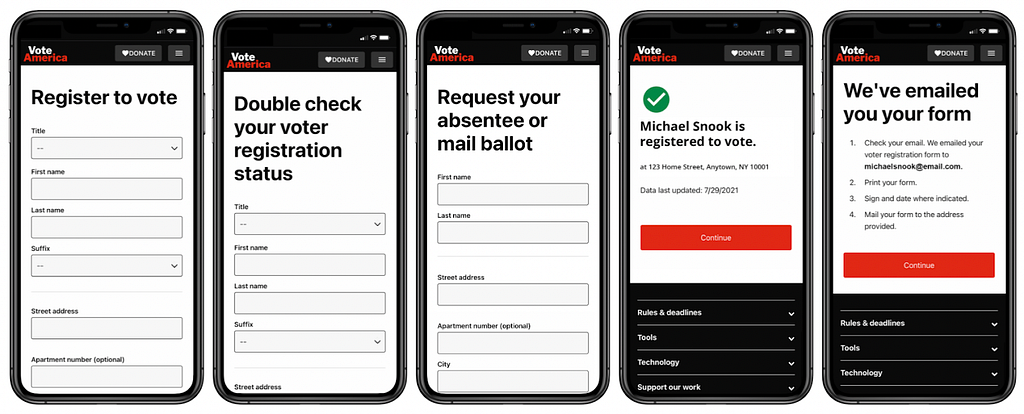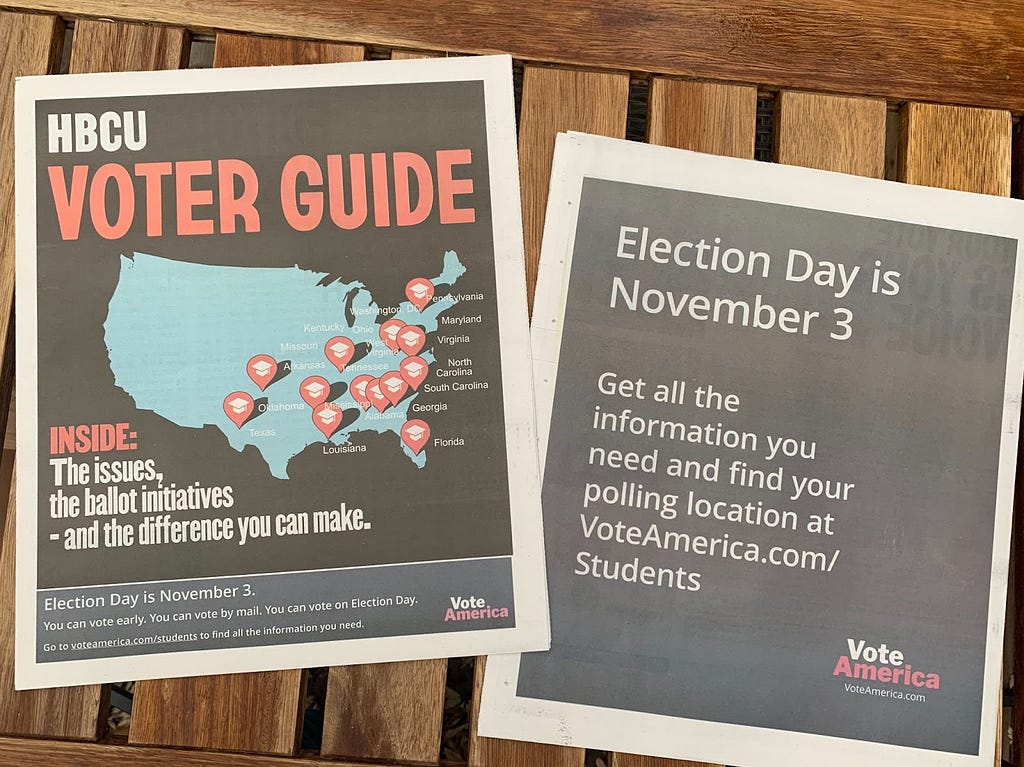
Debra Cleaver, CEO & Founder of VoteAmerica, describes herself as a serial founder. Prior to creating VoteAmerica in 2019, she counts Swing the State, Long Distance Voter, ElectionDay.org, and Vote.org among the national organizations she founded to rise to the challenge of increasing voter turnout in the United States.
At the end of 2021, Debra joined us on a call to share insights from her experience building several organizations at the intersection of technology and democracy and what VoteAmerica has planned in 2022 and beyond.
“Innovation is not an isolated incident.” A joke I often make is, “If you work day and night for a decade, you too can be an overnight success.” I started Long Distance Voter out of frustration with the 2004 Election. At the time I helped run an organization called Swing the State, where we helped people travel from red and blue states into swing states to register and turn out voters.
In 2006, I said out loud, “I don’t think we have a voter registration problem, we have a voter turnout problem.” That got me thinking “What can I do next that focuses on already registered voters who have a roadblock we could clear using the internet?” That was the main thing, building an online tool. It all took place at the first Netroots Nation convention, back when it was called YearlyKos. We decided to start this absentee ballot project, born out of my frustration that Democrats were out registering voters but not winning elections.
“This was going to take more than a weekend.” The original Long Distance Voter team started with 10 people who all had day jobs investigating police misconduct for the city of New York. We found out very quickly that the absentee ballot project was going to take more than a weekend. We thought that there must be one absentee ballot form every state accepted. It turned out that was definitely not the case. The internet was silent. I don’t think there was a single state that had a webpage explaining how to request an absentee ballot.
So the 10 of us took five states each and started calling Secretaries of State to figure it out. Georgia repeatedly hung up on us — they refused to answer questions. Missouri also refused to answer questions.
I knew enough PHP, HTML, and CSS to build what became the first website dedicated to voting by mail. It went live in April 2008. We had our first half million visitors within six months, with no advertising budget. We had no staff, just some spare time. We just kept adding to the site as people contacted us asking for help.
In 2012, we added a voter registration widget on the website and registered 75,000 people, making us one of the top 15 voter registration groups in America that year.
My buddy Carl and I did the work to add the voter registration deadlines for each state. When you Googled voter registration deadlines, you found our site. And next to every registration deadline, it said ‘Register to Vote’. Our site helped half a million people get their absentee ballots. At that time, there were a few states that didn’t have forms to request an absentee ballot. So in 2009, we made those forms for them, and many of them are still accepted today. States would actually reach out to me to request edits to the form like ‘Can you add a cell phone number to call if there’s an issue?’ I was like, ‘Absolutely!’
I had been optimizing Long Distance Voter for SEO (Search Engine Optimization) for eight years, so when I changed the name to Vote.org in 2016, we already had an opted-in email list of 2.5 million people. That’s where Action Network came in. We were able to upload everything in 30 minutes to launch our email program.

After years of establishing national organizations that focus on voter turnout, Debra Cleaver remains eager to innovate and build for tomorrow’s voters.
I created VoteAmerica as my next evolution in the voter engagement space. For example, studies have shown that the single best predictor of how consistently someone will vote is how old they are the first time they do so. So we’re launching a project called FutureVoter.com, where teenagers can sign up by giving us their name, date of birth, and cell phone number. When they turn 18, they’ll hear from us saying, “Happy birthday! It’s time to register to vote, and here is the information you need to do so.”

We built VoteAmerica’s tools so that it’s incredibly easy for us to white-label them for people. So for example, if a university wanted to launch vote.yourcollegenamehere.edu, it can just be a streamlined, slim version of the VoteAmerica tools customized with their branding.
What can people do to help drive voter turnout?
Volunteers and activists should find a C3 or C4 to volunteer with, because our officials do not get themselves elected. Find groups to volunteer your time: send your text messages, send your postcards, make your calls, knock on doors.
And if you would like for your donations to be truly effective, you should give them to C3 groups that actually register and turn out voters. Compare the budget of New Georgia Project to any partisan groups in the state. Who do you think registered more people of color? The donations you give to organizations like Mississippi Votes, New Georgia Project, Voters of Tomorrow, and VoteAmerica, those funds actually translate into votes.
“Stay hopeful and keep building.” Do not lose hope! I’m going to give you a tortured analogy right now: ‘We’re just putting out these little fires, while the arsonists are running free.’ That is by design. The other side’s tactic is meant to exhaust us by lighting so many fires, we spend all of our time firefighting instead of building.
And it is going to get harder and harder for us to seek out wins because the current system is not only antiquated but rigged against us. That’s why we keep seeing candidates win the popular vote but lose the election. That’s why this work is so important. It is meant to be iterative. I’m so tired of thinking “How are we going to get to 270?” instead of “We won!” We have all the votes. So do not lose hope.
